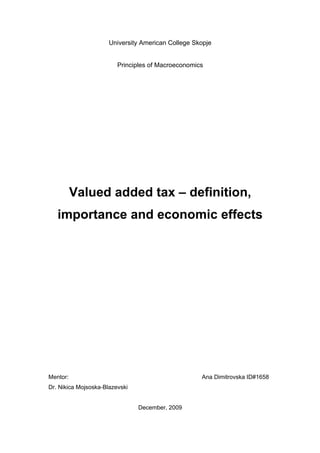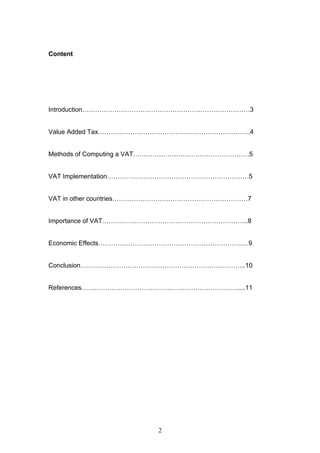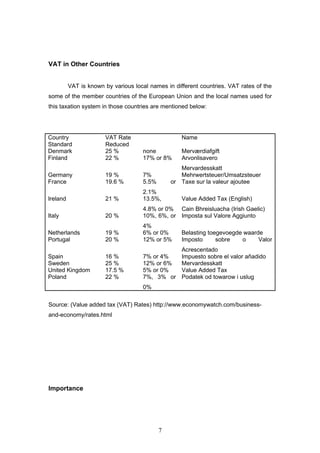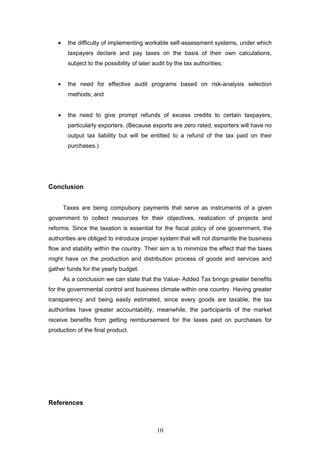Value added tax (VAT) is a consumption tax levied on the added value at each stage of production. VAT is widely used in European countries and is an important source of government revenue. The document defines VAT, describes how it is calculated using the addition, subtraction, and credit methods, and outlines the four phase process for implementing VAT. It also provides details on VAT rates and implementation in Macedonia and the European Union. In conclusion, VAT has been adopted by many countries as an effective indirect tax system.










